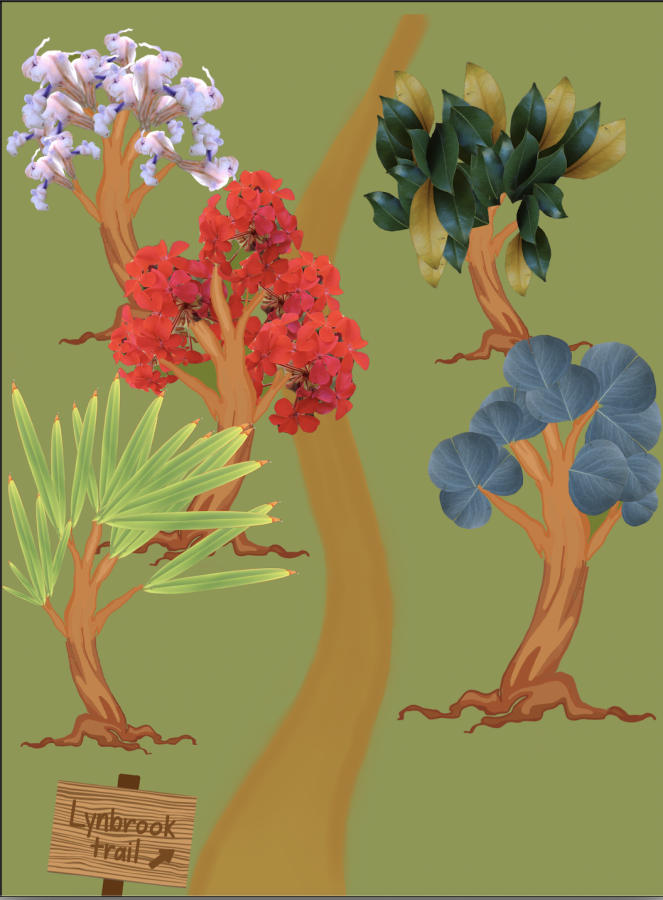A walk through our campus’s foliage and flowers
Graphic illustration by Samyukta Sarma
Lynbrook is home to a variety of plants that can be found around campus.
December 7, 2021
Plants on campus can go unnoticed in the busy atmosphere of Lynbrook, but stopping to appreciate the foliage can offer a moment of calm and appreciation.
Magnolia magnolia grandiflora– Magnolia trees have large leaves that are a waxy, shiny dark green on top and a fuzzy golden-brown color on the underside. The tree sprouts large fragrant white flowers in the spring. Find this tree along the side of the boys’ locker room.
Fortnight lily dietes iridioides– Fortnight lilies have white flowers with purple teardrop shapes inside. For this reason, one might think it is a plain white flower until they look inside the bloom. This beautiful flower can be found next to the entrance to the music and art wing from the quad.
Garden geranium pelargonium x hybridum– Located in concrete plant pots in front of classrooms, these bright red flowers with frilly, lily-pad-like leaves have caught the eyes of many students. Blooming almost year-round, they are considered annual plants in some places and evergreen in others.
Southern blue gum eucalyptus eucalyptus globulus- Eucalyptus trees have leaves that hang off of drooping branches. The leaves’ fragrance is strong, but one might not recognize the eucalyptus scent until they tear open a leaf. Eucalyptus trees can be found in multiple planter boxes around campus or next to the Chinese elm.
Chinese elm ulmus parvifolia– The most notable feature of the Chinese elm is its trunk. The gray bark of the tree is usually peeling away, exposing its tan underbark and creating a pattern similar to an animal.
Century plant agave americana– The century plant, located in the planter box in front of the library, is large and has patterned fronds. Common in deserts, this plant has thrived throughout droughts common in California.
Aleppo pine pinus halepensis– Lining the outer edge of the parking lot, Aleppo pines originate from the Mediterranean and thrive in the dry California climate. Its shape differs from that of pine trees common in nearby forests; instead, its branch structure is more similar to deciduous trees.



























































